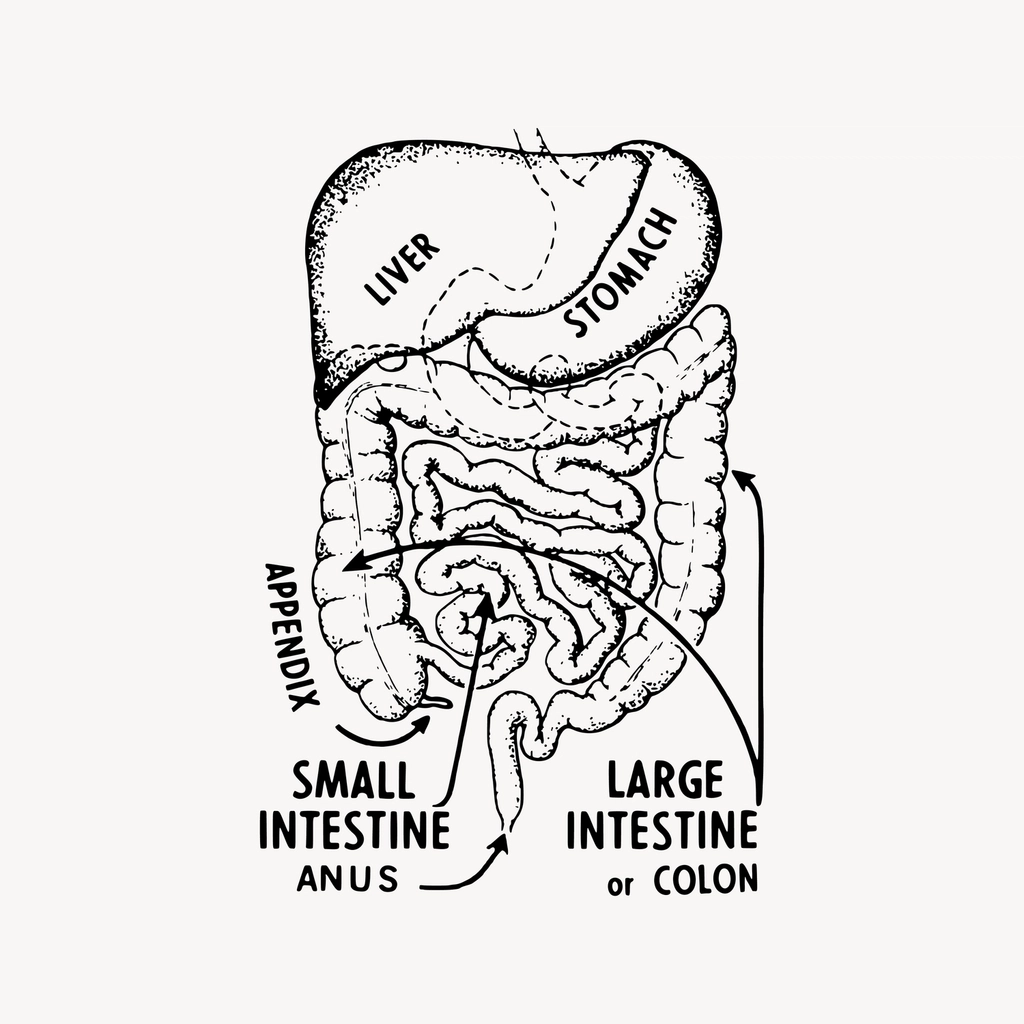“Learn about the large intestine, its structure, functions, and importance in digestion. Discover tips for maintaining a healthy colon and preventing common digestive issues.”
Contents
At the end of this article, students should be able to know the following:
- Definition of large intestine.
- Anatomy of the large intestine.
- Functions of the large intestine.
- Disorders of the large intestine
- Maintaining a healthy large intestine.
- Revision questions for students
The Functions of the Large Intestine: Structure and Importance in Digestive Health
The large intestine, also known as the colon, is a vital part of the digestive system. Despite its relatively simple appearance, it plays a complex role in maintaining our overall health. In this hall, we will study the structure, functions, and importance of the large intestine in our bodies.
Anatomy of the Large Intestine
The large intestine is a tubular structure that measures approximately 1.5 meters (5 feet) in length and about 6 centimeters (2.5 inches) in diameter. It begins where the small intestine ends and is divided into several parts:
People are also studying ..
- Small Intestine and its functions, anatomy and role in digestion
- THE ANATOMY PHYSIOLOGY OF FARM ANIMALS
1. Cecum: The starting point of the large intestine, located in the lower right abdomen. It connects to the ileum (the last part of the small intestine) via the ileocecal valve, which prevents backflow.
2. Colon: The largest section of the large intestine, further divided into four parts:
- Ascending colon: Travels upward on the right side of the abdomen.
- Transverse colon: Extends horizontally across the upper abdomen.
- Descending colon: Moves downward on the left side of the abdomen.
- Sigmoid colon: An S-shaped section leading to the rectum.
3. Rectum: The final part of the large intestine, serving as a storage area for feces.
4. Anal Canal: The opening at the end of the digestive tract where waste is expelled.
Major Functions of the Large Intestine
The large intestine plays an essential role in digestion and overall health, performing several critical functions:

1. Water and Electrolyte Absorption
One of the primary functions of the large intestine is to absorb water and electrolytes (like sodium and potassium) from the remaining indigestible food matter. This process helps to maintain fluid balance in the body and consolidate waste into solid stool.
2. Formation and Storage of Feces
The large intestine compacts undigested food, dead cells, and bacteria into feces. This waste is stored in the rectum until it is ready to be expelled during defecation.
3. Housing Beneficial Gut Bacteria
The large intestine is home to trillions of bacteria, collectively known as the gut microbiota. These bacteria perform several important tasks, such as:
- Fermenting undigested carbohydrates and fibers to produce short-chain fatty acids (SCFAs), which provide energy and have anti-inflammatory effects.
- Synthesizing essential vitamins like vitamin K and certain B vitamins.
- Supporting immune function by preventing harmful pathogens from colonizing the gut.
4. Gas Production: During the fermentation process, gut bacteria produce gases such as carbon dioxide, methane, and hydrogen. While this is a natural part of digestion, excessive gas can sometimes cause bloating or discomfort.
5. Immune System Support: The large intestine plays a significant role in supporting the immune system. Gut-associated lymphoid tissue (GALT), found in the walls of the large intestine, helps protect the body from harmful pathogens and maintain a healthy immune response.
Disorders of the Large Intestine
Like any organ, the large intestine is susceptible to various disorders, including:
- Constipation: Difficulty passing stool, often due to low fiber intake, dehydration, or slow intestinal movement.
- Irritable Bowel Syndrome (IBS): A chronic condition characterized by abdominal pain, bloating, and irregular bowel movements.
- Inflammatory Bowel Disease (IBD): Includes Crohn’s disease and ulcerative colitis, which cause inflammation of the digestive tract.
- Colorectal Cancer: A malignant tumor that can develop in the colon or rectum. Regular screening can help detect it early.
- Diverticulitis: Inflammation or infection of small pouches (diverticula) that can form in the colon wall.
Maintaining a Healthy Large Intestine
Taking care of your large intestine is essential for overall well-being. Here are some tips to promote colon health:
- Eat a High-Fiber Diet: Foods like fruits, vegetables, whole grains, and legumes promote regular bowel movements and support beneficial gut bacteria.
- Stay Hydrated: Drinking plenty of water helps prevent constipation and supports smooth digestion.
- Exercise Regularly: Physical activity stimulates intestinal movement and promotes healthy bowel function.
- Limit Processed Foods: Minimize consumption of highly processed and high-fat foods, which can negatively impact gut health.
- Probiotics and Prebiotics: Include probiotic-rich foods (like yogurt and fermented foods) and prebiotic foods (like garlic, onions, and bananas) to support a healthy microbiome.
Conclusion On The Functions Of The Large Intestine
The large intestine is much more than a simple waste-processing organ. Its role in water absorption, vitamin synthesis, immune support, and housing beneficial bacteria makes it indispensable for overall health. By adopting a healthy lifestyle and staying aware of potential colon issues, we can ensure that our large intestine functions optimally, contributing to a healthier and happier life. Remember, if you experience persistent digestive issues, consult a healthcare professional for advice and proper care.
